【百家大讲堂】第118期:国际雷达和信号处理(二)
报告题目1:Radar Adaptivity: Antenna Based Signal Processing Techniques
主 讲 人:Prof. Zongbo Wang(University of Kansas, USA)
报告题目2:Clutter Cancelling for Wideband Radar
主 讲 人:Prof. François Le Chevalier ( Delft University of Technology, Netherlands )
报告题目3:Phase Calibration for Tomographic Applications: Requirements and Solutions
主 讲 人:Prof. Fabio Rocca ( Polytechnic Institute of Milan, Italy )
报告题目4:Three-Dimensional Inverse Synthetic Aperture Radar
主 讲 人:Prof. Marco Martorella ( University of Pisa, Italy )
报告题目5:Integrated Sensing, Navigation and Communication in “Health”, “Through Wall Radio Sensing” and “Smart City” Applications
主 讲 人:Prof. Leo P. Ligthart ( Delft University of Technology, Netherlands )
报告题目6:Integrated Sensing, Navigation and Communication in “Health”, “Through Wall Radio Sensing” and “Smart City” Applications
主 讲 人:Prof. Stuart Anderson ( University of Adelaide, Australia )
报告题目7:Adaptive Detection and CFAR Techniques in Sea Clutter
主 讲 人:Prof. Simon Watts ( University College London, UK )
报告题目8:Cognitive Adaptive Array Processing (CAAP) – Its Time Has Come
主 讲 人:Prof. Eli Brookner ( Raytheon Company (Retired), USA )
时 间:2018年10月22日(周一)下午13:30-18:00
地 点:中关村校区中心教学楼1楼报告厅
主办单位:研究生院、信息与电子学院
【报告1】
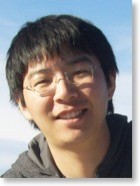
主讲人简介:
Dr. Zongbo Wang is the co-Founder and CEO of Ainstein ( ainstein.ai ), USA and Muniu Technology ( muniu.tech ), Beijing, China. He honed his expertise by leading and contributing to numerous large scale research projects at universities and research institutes in China, the United States, Spain, Singapore and the Netherlands.
He received his B.S and Ph.D. in Electronic Engineering from the Beijing Institute of Technology, in 2004 and 2009, respectively. In 2007, he was with the Group of Microwave and Radar (GMR), Universidad Politecnica de Madrid, Madrid, Spain. From 2009 to 2011, he worked in the International Research Centre for Telecommunications and Radar (IRCTR) at the Delft University of Technology, Delft, The Netherlands. He joined the Institute of Microelectronics, Agency for Science, Technology and Research (A*STAR), Singapore, in 2011, and later joined the Faculty of the Department of Electrical Engineering, Dalian University of Technology, Dalian, China. In 2013, He joined the Center for Remote Sensing of Ice Sheets (CReSIS), University of Kansas, Lawrence, KS, USA.
From 2015, Dr.Wang started to work on the commercialization of radar technologies, with the vision to define the future of flying and driving with innovative sensing system, processing and control technologies. Dr.Wang and his team have been well recognized as the leading innovators in developing the collision-avoidance radar, radar altimeters, FPGA-based flight controllers for drones and UAVs, and advanced automotive radar systems for ADAS and self-driving cars.
摘要:
mmWave radar has been known as one of the most important sensing devices as part of the perception packages, along with Lidar and Camera. This presentation will cover the recent development accomplishment and challenges of mmWave radar systems for autonomous vehicles.
【报告2】
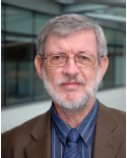
主讲人简介:
François Le Chevalier is Emeritus Professor “Radar Systems Engineering” at Delft University of Technology (The Netherlands), and retired Chief Scientist of Thales Air & Land Systems. Mr. Le Chevalier began his career at the Office National d’Etudes et de Recherches Aérospatiales (Onera), where he initiated research on radar target and background signatures processing. In 1986, Mr. Le Chevalier joined Thomson-CSF (now Thales), where he pioneered French developments in adaptive digital beamforming and STAP radar systems demonstrations, and shared apertures and multisensor concepts design and validation. In 1998, he joined the Thales Airborne Systems group, as Scientific Director, in charge of advanced research and developments coordination (airborne radars, electronic warfare, airborne mission systems).
His current research activities include space-time coding for active antenna systems, and wideband unambiguous radar systems.He has been active in- or chairing- the Technical Program Committees of most IEEE International Radar Conferences since Brest, 1999, has recently been the Honorary Chair of SEE/IEEE International Radar Conference 2014 in Lille, France, and will be the Honorary Chair of SEE/IEEE International Radar Conference 2019 in Toulon, France. An author of many papers, tutorials, and patents in radar and electronic warfare, Prof. Le Chevalier, an Emerite member of the Société des Electriciens et des Electroniciens (SEE), is the author of a book on “Radar and Sonar Signal Processing Principles” published by Artech House in 2002, editor of “Non-Standard Antennas”, published by Wiley in 2010, and co-author of “Principles of Modern Radar: Advanced Techniques”, Scitech, IET Publishing, 2013, and of “Advanced Ultrawideband Radar: Signals, Targets, and Applications”, CRC Press, 2016.
摘要:
Wideband radars have been proposed for detection of moving targets, with unique capability of non-ambiguous detection due to range migration. Moreover, diversity has long been used for mitigating fading effects due to the fluctuation of targets and clutter.However, wideband radar waveforms, which can lead to significant benefits for detection of moving targets in adverse clutter, are difficult to analyze, since the real benefits come from combined effects of target resolution in range, migration over successive cells of clutter, Doppler resolution and instantaneous bandwidth, and residual ambiguities in Doppler.In order to contribute to a better understanding of the real benefits of agile transmissions for detection of moving targets, clutter cancelling performances of wideband radars will be examined, both through theoretical modelling and experimental validations, demonstrating accurate prediction of radar performance at all velocities.Special attention will be given to long range surveillance and tracking, and new results on detection of moving targets in clutter will be provided to demonstrate the effectiveness of these new architectures for small targets detection at long range, in difficult environments. Recommendations for system design will finally be given for better discrimination of moving targets against fixed and diffuse clutter.
【报告3】
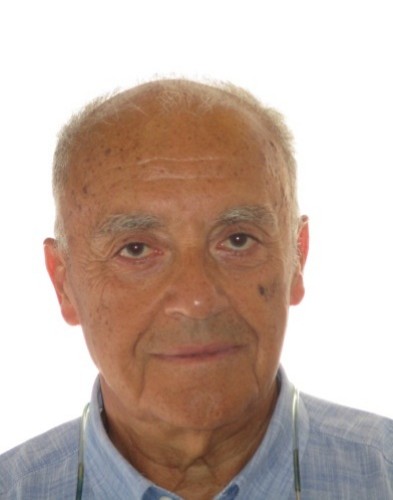
主讲人简介:
Fabio Rocca, (Dr. Ing. Electronics, 1962) is emeritus Professor of Telecommunications at the Politecnico di Milano. Co-founder of two technological companies: Tele-Rilevamento Europa and Aresys, both spin off of Politecnico di Milano.He invented in 1968 the motion compensation technique, nowadays generally used for video compression. In seismic prospecting for oil, in cooperation with ENI, he studied multichannel filtering, interpolation of faulted surfaces, migration in the frequency domain, bistatic and multistatic processing, blind deconvolution. In Synthetic Aperture Radar he first used seismic migration for focusing, and jointly proposed the use of Permanent Scatterers.
He is currently working on the design of bistatic and geosynchronous SAR systems, Polarimetric Tomography, and on airborne radar systems. He is Associate to the Italian Space Agency.Former member (1993-2016) of the Scientific Advisory Groups of the European Space Agency for the radar satellites ERS, Envisat, Sentinel–1, BIOMASS, and currently of the ESA Advisory Committee for Earth Observation, ACEO. In cooperation with LIESMARS, Wuhan University, he participates from 2004 to the Chinese European space research programs Dragon (1-4), sponsored by ESA and by NRSCC. Prof. Rocca is Past President of the European Association of Geoscientists and Engineers (1987), honorary Member of the Society of Exploration Geophysicists(1989) and of the EAGE (1998). Italgas Award 1989 and Rhein Foundation 1999 Technology Award for the invention of motion compensation. Doctor Honoris Causa in Geophysics of the Institut Polytechnique de Lorraine, 2001. EAGE Erasmus award 2009. ENI Prize for New Frontiers for Hydrocarbons (shared with A. Ferretti, CEO of TRE). Chinese Government International Scientific Technological Cooperation Award, 2013. Prof. Rocca coauthored more than 300 publications and participates to 12 patents.
摘要:
Synthetic Aperture Radar (SAR) data collected over a two dimensional (2D) synthetic aperture can be processed to focus the data in the 3D space, using SAR Tomography. A fundamental requirement for this processing is to have precise knowledge of the platform position along the 2D synthetic aperture. The precision of the positioning should be of the order of magnitude of the wavelength divided times the number of layers of the tomographic focusing. This requirement is not easily met in the case of repeat-pass flights. Sub-wavelength platform position errors give rise to residual phase screens among different passes, which hinder coherent focusing in the 3D space and create side-lobes or complete defocusing . The strategy for calibrating repeat-pass tomographic SAR data in the absence of reference targets, prior information about terrain topography, and even in the absence of any point- or surface-like target within the illuminated scene that we proposed several years ago is nowadays being acknowledged and used by other researchers, and thus useful to learn. Indeed, multiple flight lines provide enough information to jointly estimate platform and target positions. The proposed approach is validated using real data from the ESA campaigns AlpTomoSAR, BioSAR 2008, but also TropiSAR, AfriSAR and by JPL and ONERA researchers. A cross-check of the results from simultaneous P- and L-Band acquisitions from the TropiSAR data-set indicates that the dispersion of the retrieved flight trajectories is limited to a few millimeters, much beyond what could be obtained using navigation tools.
【报告4】
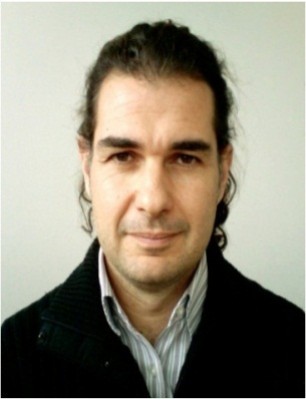
主讲人简介:
Marco Martorella received his Laurea degree (Bachelor+Masters) in Telecommunication Engineering in 1999 (cum laude) and his PhD in Remote Sensing in 2003, both at the University of Pisa. He is now an Associate Professor at the Department of Information Engineering of the University of Pisa where he lectures “Fundamentals of Radar” and “Digital Communications” an external Professor at the University of Cape Town where he lectures “High Resolution and Imaging Radar” and “Introduction to Radar” within the “Masters in Radar and Electronic Defence”. Prof. Martorella is also Director of the CNIT’s National Radar and Surveillance Systems Laboratory. He is author of more than 200 international journal and conference papers, four book chapters, a book entitled “Inverse Synthetic Aperture Radar Imaging: Principles, Algorithms and Applications” and another book entitled “Radar Imaging for Maritime Observation”. He has presented several tutorials at international radar conferences, has lectured at NATO Lecture Series and organised international journal special issues on radar imaging topics.
He is a member of the IET Radar Sonar and Navigation Editorial Board, a senior member of the IEEE and a member of AFCEA. He is also a member of the IEEE AES Radar Systems Panel and of the NATO SET Panel. He is currently the chair of the research task group NATO SET-250 on “Multidimensional Radar” and co-chair of NATO SET-236 on “Robust compressive sensing techniques for radar and ESM applications”. He was also chair of the SET-196 on “Multichannel/Multistatic radar imaging of non-cooperative targets” and of the specialist meeting NATO SET-228 on “Radar Imaging for Target Identification”. He has been recipient of the 2008 Italy-Australia Award for young researchers, the 2010 Best Reviewer for the IEEE GRSL, the IEEE 2013 Fred Nathanson Memorial Radar Award, the 2016 Outstanding Information Research Foundation Book publication award for the book “Radar Imaging for Maritime Observation” and the 2017 NATO Set Panel Excellence Award. He is co-founder of a radar systems-related spin-off company, namely ECHOES. His research interests are mainly in the field of radar.
摘要:
Inverse Synthetic Aperture Radar (ISAR) is a technique used for reconstructing radar images of moving targets. Typical ISAR images are 2D images and suffer of a number of limitations due to the image genesis. Such limitations can be overcome by implementing 3D ISAR. This lecture will introduce 3D ISAR imaging by combining traditional 2D ISAR imaging and radar interferometry. Concept, implementation and examples of 3D ISAR imaging will be provided to the audience during the presentation.
【报告5】
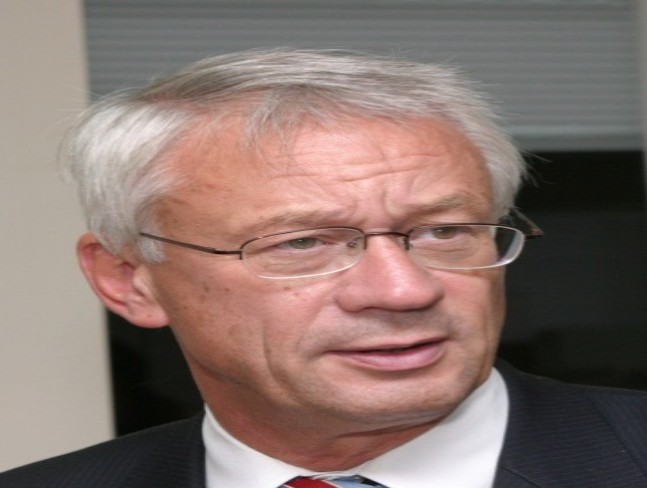
主讲人简介:
Doctor of Technology, Delft University of Technology; Thesis: "Antenna Design and Characterization based on the Elementary Antenna Concept", December 1985. Engineers degree Cum Laude (M.Sc.), Delft University of Technology; Thesis: "Electromagnetic Reflections from a transparent diffraction grating", June 1969.
Career/Employment
1968-2011: Faculty of Electrical engineering, Delft University
1976-1977: Chalmers University Gothenburg, Sweden
1988-2011: Professor Microwaves, Remote Sensing and Radar, Delft University
1994-2011: Director IRCTR, Delft University of Technology
2011-present: Emeritus Prof. Delft University of Technology
2011-present: Chairman CONASENSE
2012-present: Adjunct-professor UI, Jakarta, Indonesia
2014-present: Adjunct-professor ITS, Surabaya, Indonesia
2014-present: Adjunct-professor Beijing Institute of Technology, China
2017-present: World Class Professor, Indonesia
Specialization
(i) Main fields: antennas & propagation, radar and remote sensing
(ii) Other fields: satellite, mobile and radio communication
摘要:
In the last decade wireless technology and systems created an explosive growth in a wide range of data services. Services started with voice, video and image transmissions. Bottleneck was often the limited data transmission capacity. However, recent breakthroughs in throughput allow for much higher data rates over the same wireless channel and thus for support of many more demanding services. The majority of on-going developments focus on technology and application which have COmmunications, NAvigation, SENsing and SErvices in common. In the workshop lecture some visionary wireless sensing and navigation services are selected which require stringent demands to be fulfilled by next generation wireless technologies and systems. Characteristic for the services is the importance for Society and/or the expectation of a substantial market potential. In the presentation three application areas of future services are elucidated. As guest editor of the special issue of the IEEE-AESS Magazine, May-June 2018 on Integrated Navigation, Sensing, and Communication for solving Problems in Society I have selected out of 9 papers two illustrative examples.
【报告6】
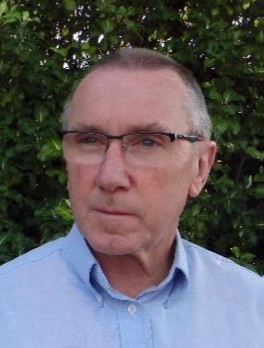
主讲人简介:
Stuart J. Anderson received the B.Sc. (1st Class Honours) and Ph.D. degrees in physics from the University of Western Australia in 1968 and 1972 respectively. As a Defence Scholarship student, he worked on the early Australian HF radar program in 1965-67, studying re-entry phenomena. In 1974, he was invited to join the team being assembled in the Australian Defence Science and Technology Organization to develop the Jindalee over-the-horizon radar system where he assumed responsibility for ocean surveillance and remote sensing. In the 1980’s he spent a year at the Naval Research Laboratory in Washington DC, working as a visiting scientist on the US Navy Relocatable OTH Radar (ROTHR), and another year in the UK working on a related joint UK-US project. In 1998-99 he spent some months on attachment to the French OTHR project Nostradamus.
Stuart holds or has held adjunct professor appointments at several Australian universities, including his principal appointment in the Physics Department at the University of Adelaide, having retired from DSTO in 2014 at age 68. In addition, Stuart is a professor at the Université Rennes I, France, which, in 2005, awarded him an honorary doctorate for his contributions to radar science. He is a regular visiting professor at University College London and at the Université Paris-Sorbonne, and remains highly active in research related to HF radar, including projects underway in ionospheric physics, oceanography, electromagnetic scattering, radiowave propagation, signal processing, inverse problems, nonlinear optimization and microwave polarimetry. Stuart was the recipient of the 1992 Australian Minister of Defence Science Award for Research Achievement. He has published well over 350 journal papers, conference papers, book chapters, and reports in these fields, and has presented numerous tutorials and lecture courses on HF radar and mathematical techniques. He is the principal author of the chapter on OTH radar in the authoritative Radar Handbook.
摘要:
Radars operating in the HF band are confronted by many challenges that seldom impact on microwave radars. For example, in the case of HF skywave radars, the vagaries of the ionospheric propagation path demand continuous adjustment of frequency and waveform parameters to adapt to the ever-changing medium, as well as introducing strong spatio-temporal fluctuations in signal amplitude, phase and polarization which must be dealt with by signal processing, aided by sophisticated radar resource management techniques. HF surface wave radars encounter corresponding propagation complications, arising in this case from spatio-temporal variations in the sea surface geometry which modulate the radar signal. Together with other elements of the radar observation process – noise, clutter, scattering from diverse target types, conflicted tasking, and a large number of system degrees of freedom - these conspire to make radar management an exceptionally complex task, one that few radar managers and their teams ever accomplish to somewhere close to optimality.One possible solution to this predicament is to equip the radar with its own ‘intelligence’, able to integrate expert domain knowledge and a host of ancillary real-time data in a structural framework that can assume many of the duties presently performed by humans. /
This is not a new idea – at least three attempts to develop expert systems for OTHR were made in the 1980s and 90’s, but these were not successfully implemented in operational radars. One reason for this is that the concept of artificial intelligence on which these systems were based is inherently limited.Recently a radically new approach has been proposed, inspired by brain theory and neurolinguistics, which aspires to overcome a key limitation of knowledge-based systems. The starting point for this initiative is Jean Piaget’s definition: “Intelligence is what you use when you don't know what to do: when neither innateness nor learning has prepared you for the particular situation”. Contemporaneously, the arrival of ‘big data’ has enabled convolution neural networks to find subtle patterns in the behavior of the physical world as perceived by HF radars. These patterns can then serve as priors for decision-making, model inference, dimensionality reduction, manifold identification and so on. In this talk I shall review the history of artificial intelligence in the HF radar context and proceed to outline some of the directions of present-day research aimed at raising the IQ of our HF radars.
【报告7】
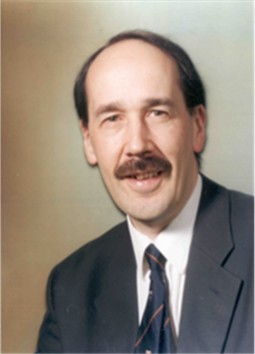
主讲人简介:
Prof. Simon Watts graduated from the University of Oxford in 1971 (MA), obtained an MSc and DSc from the University of Birmingham in 1972 and 2013, respectively, and a PhD from the CNAA in 1987. He was deputy Scientific Director and Technical Fellow in Thales UK until 2013 and is a Visiting Professor in the department of Electronic and Electrical Engineering at University College London.
He is author and co-author of over 65 journal and conference papers, a book on sea clutter and several patents. He was chairman of the international radar conference RADAR-97 in Edinburgh UK. He was appointed MBE in 1996 for services to the UK defence industry and is a Fellow of the Royal Academy of Engineering, Fellow of the IET, Fellow of the IMA and Fellow of the IEEE.
摘要:
This lecture will briefly review some of the methods used for adaptive detection of targets in microwave radar sea clutter. The review will first cover non-coherent techniques, particularly the cell-averaging CFAR detector, with emphasis on its operation in sea clutter. Next, detectors operating on coherent radar returns will be described, covering pre-Doppler and post-Doppler techniques. The limitations on performance imposed by the time-varying and range-varying nature of sea clutter will be illustrated.
【报告8】

主讲人简介:
Dr. Eli Brookner Bio: MEE & Dr. Sc. Columbia Un. ’55 &’62; BEE CCNY, ’53. Raytheon 1962-2014; Principal Engineering Fellow; worked on radars for air traffic control, military defense, space & navigation: on ASDE-X, ASTOR RADARSAT II, AGBR, major Space Based Radar programs, NAVSPASUR, COBRA DANE, PAVE PAWS, MSR, COBRA JUDY Replacement, THAAD, SIVAM, SPY-3, Patriot, BMEWS, UEWR, SRP, Pathfinder, Upgrade for >70 ARSRs, AMDR, Space Fence, 3DELRR. Before Raytheon: Columbia Un Electronics Research Lab. [now RRI], Nicolet, & Rome AF Lab. Awards: IEEE 2006 Dennis J. Picard Medal for Radar Technology & Application; IEEE ’03 Warren White Award; Radio Club of America (RCA) Armstrong Medal 2017; 2017 IEEE AESS Outstanding Organizational Leadership Award; Journal of Franklin Inst. Premium Award best paper, 1966; IEEE Wheeler Prize for Best Applications Paper, 1998. Fellow: IEEE, AIAA, & MSS. 4 books: Tracking and Kalman Filtering Made Easy, Wiley, 1998; Practical Phased Array Antenna Systems (1991), Aspects of Modern Radar (1988), and Radar Technology (1977), Artech. >10,000 attended courses in 25 countries. Banquet & keynote speaker 13 times. > 230 publications. > 100 invited. 6 papers in Books of Reprints. 9 patents.
摘要:
Usually adaptive array processing is presented with exotic matrix equations that are difficult to understand and do not give a physical feel to what is going on so one can improve on the jammer suppression. This tutorial presents the subject from physical point of view which gives one great insight into the best way to do jammer suppression. Using Cognitive Adaptive Array Processing (CAAP) gives physical insight into how classical adaptive jammer suppression takes place without any heavy math. The immense power of CAAP is demonstrated. Digital beam forming (DBF) makes CAAP the processing of the future.Barrage Jammer: It is shown how CAAP reduces by orders of magnitude the computation complexity and the number of training samples needed.
CAAP does this while only degrading the antenna adapted sidelobe levels (SLL) for a small number of sidelobes by a very small amount. For example for the case of one jammer the degradation in SLL is only 2 dB for 2 SLs vs the degradation of many sidelobes by like 30 dB using the classical Sample Matrics Inversion [SMI] technique). Also orders of magnitude fewer training sample K are needed with CAAP vs the SMI. For example assume an N = 10,000 element array and again J = 1 barrage noise jammer. With the classical SMI one needs to have K = 5N = 50,000 training samples to get a signal-to-interference (SIR) to within 1 dB of optimum. With CAAP only K=4 samples are needed. Also SMI requires the inversion of an NXN = 10,000X10,000 interference matrix which necessitates on the order of a 1,000 billion (a trillion) operations (multiplies and divides). In contrast with CAAP it is shown that only K = 4 training samples are needed and no matrix inversion is needed, only 4 complex multiplies and one complex divide operations is needed for a reduction of the order of 100 billion operations. Covered will be the expressing of the adapted antenna pattern in terms of its eigenbeams, which is known as the principal component formulation. Also covered is diagonal loading. It is pointed out that CAAP represents a very fruitful area for future study.
A lot can be learned for CAAP by doing simulations for different cases. This is now easy to do using Mathworks MATLAB and Phased Array System Toolbox.Hot Clutter Jammer: We show how with hot clutter present we can use CAAP to cancel out the jammer even if it is coming into the main lobe where we are looking for a target. We show how with CAAP we cancel out main beam jammer without any loss of signal strength. Main lobe jammer cancellation without signal cancellation using CAAP. Amazing. Repeater Jammer: CAAP is applied to repeater jammers using the locations of repeaters to spoof them and lower the radar signals they can see.MIMO vs Conventional Array Radars: We compare performance of both and show that the MIMO system does not provide better jammer suppression. Examine both Ubiquitous and Machine Gunning Conventional MIMO Radars. These conventional MIMO radars detailed. Results apply to thin/full and full/thin array systems.
